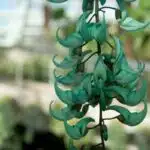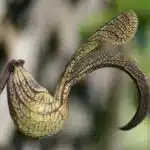The beauty and grace of wisteria are undeniable. Growing this magnificent flowering vine is a rewarding endeavor, capable of providing years of enjoyment. With the right knowledge and care, you can plant, grow, and cultivate your own wisteria to create a stunning visual display in your garden.
Wisteria is an exquisite flowering vine that can add magnificence to any garden space. This dynamic bloomer boasts an array of stunning colors and an elegant display perfect for highlighting the natural beauty of your landscape. With proper planting and maintenance techniques, you can ensure that your wisteria flourishes over time and gives you satisfaction for many years to come.
This guide will provide detailed information on how to plant, grow, and care for wisteria successfully so that it stays healthy and vibrant throughout its life cycle. Whether you’re looking to add a touch of class to your garden or simply want to create a breathtaking visual experience, learning how to properly plant, grow, and care for wisteria will guarantee success in achieving your desired results.
Choosing The Right Wisteria
Choosing the right wisteria is like selecting a precious gem – it’s an awe-inspiring experience that takes time and thought. With so many varieties of wisteria to choose from, you want to make sure you’re getting one that will thrive in your climate and offer years of stunning blooms. Picking the best one for you can be a bit overwhelming, so let’s break down some important points to consider.
When deciding which type of wisteria is best for you, first look at the hardiness zones in your area. Wisterias are generally hardy plants that can tolerate cold weather, but some varieties are more tolerant than others. You’ll also want to consider how much light and water your wisteria needs. Some varieties require full sun while others prefer partial shade. Water requirements vary depending on the variety too – some need frequent watering while others prefer drier conditions.
Finally, think about how much space you have available for your wisteria. Chinese and Japanese varieties tend to grow larger than other species, so if you’re limited on space opt for a smaller variety such as Amethyst Falls or Blue Moon instead. With a little research and patience, choosing the perfect wisteria for your garden can be an enjoyable and rewarding experience! Ready to get started? Let’s move onto selecting a planting location and soil requirements next!
Planting Location And Soil Requirements
Have you ever wondered what it takes to plant and care for wisteria? Location and soil requirements are key factors in cultivating this stunning flowering vine. Let’s explore the best places to grow wisteria and how to ensure its success.
When selecting a spot for your wisteria, choose an area that receives full sun for at least six hours of direct sunlight each day. Wisteria will thrive in a wide range of soils from moist, well-drained soils to dry, sandy soils. When planting, select an area with room enough for the vine’s massive growth potential — up to 25 feet long!
For soil preparation, mix in compost or peat moss to loosen the soil so roots can easily penetrate it. If you’re planting multiple wisterias, keep them at least 8 feet apart or else they may compete against each other for nutrients and water. Additionally, be sure to give the plants plenty of support with a strong trellis or arbor, as they can become too heavy and break off if not given proper support.
With the right location and soil requirements, your wisteria will have everything it needs for healthy growth and abundant blooms year after year. The next step is getting your hands on some quality plants — let’s take a look at how we can do that!
Obtaining Wisteria Plants
Did you know that wisteria is one of the longest-lived flowering plants, with some vines living for over 100 years? Whether you’re looking to add a classic touch to your garden or simply want to admire its fragrant blooms, it’s important to obtain and plant wisteria in the right way so it can thrive.
When it comes to obtaining wisteria plants, you have a few options. You can purchase an established vine from a nursery, which will usually come in the form of a 1-2 foot long stem with two or three sets of leaves. For those who are more experienced gardeners, you can also try propagating your own wisteria by rooting cuttings taken from an existing vine. Whichever approach you take, make sure to inspect the plant thoroughly before bringing it home and planting it.
Finally, if you’d like to try growing your own wisteria from seed, you can find them online or at nurseries specializing in rare and hard-to-find species. Growing wisteria from seed is more difficult than other methods since they typically take several years before they start flowering—but for those willing to put in the time and effort, this approach is a rewarding experience that yields beautiful results.
Now that we’ve explored where and how to obtain your wisteria plants, let’s move on to the next step: planting them in your garden!
Planting Wisteria
Planting wisteria is like putting the pieces of a puzzle together. It’s not as complicated as it sounds, but it does require some planning and effort. With dedication and patience, you can have a beautiful wisteria vine blooming in no time!
The most important thing to do before planting your wisteria is to choose a location that will receive enough sunlight and also has plenty of space for the vine to grow. Additionally, make sure the soil is well-draining and nutrient-rich. When you have chosen your spot, dig a hole that is two times wider than the root ball of your plant. Then, backfill the hole with soil and compost mixture and gently tamp down the earth around your new plant.
Water your wisteria immediately after planting it, making sure all the roots get soaked. After this initial watering session, water regularly according to your climate’s needs. Keep an eye out for any pests or diseases that may threaten your newly planted vine; if detected early on, they can be easily treated with organic solutions or pesticides.
With adequate sunlight and proper care, you’ll soon witness gorgeous clusters of fragrant blossoms gracing your garden!
Pruning And Training Wisteria
Pruning and training wisteria is the key to the beauty and fragrant blooms of this stunning vine. To truly appreciate its majestic purple flowers, its branches need to be properly pruned and trained. This delicate process can take a bit of time and effort, but it’s well worth it in the end as you reap the rewards of a vibrant display of colorful blossoms.
When it comes to pruning, timing is everything. The best time to prune wisteria is in late winter or early spring before new growth begins. You’ll want to remove any dead or weak branches first, then shorten the longest shoots back to about six buds from the main stem. This will give your plant an overall balanced look and allow for more light penetration into its interior.
To train wisteria, use a trellis or other support structure such as wires or strings attached to posts or walls that are at least 8 feet tall. Wisteria vines can get very long and heavy so you want them secured firmly in place. Start training the vines when they’re young by loosely wrapping them around the support structures until they form an even pattern with no gaps between them. Once established, you’ll need to periodically trim away any stray shoots that don’t fit neatly into your desired shape so that your plant looks tidy and uniform year-round.
The results of properly pruning and training your wisteria will be a beautiful sight for all who come into contact with it – one that will bring joy for many years! With just a little patience, you can have a stunning display of vibrant blossoms in no time that will make any garden shine brighter than ever before!
Watering And Fertilizing Wisteria
Now that you have planted and trained your wisteria, it’s time to make sure it stays healthy. Keeping up with regular watering and fertilizing is essential for the best growth of your wisteria.
Proper watering and fertilizing will ensure that your wisteria has everything it needs to thrive. When you water your wisteria, be sure to do so thoroughly but not too frequently. Watering should be done in the morning, when the soil is still damp from dew or irrigation. It’s important not to overwater your plants as this can lead to root rot.
When it comes to fertilizing, use a fertilizer specifically designed for flowering plants such as wisterias. Fertilize every 2-4 weeks during the growing season with a liquid fertilizer diluted in water at about ¼ of the recommended strength on the package instructions. Make sure not to over-fertilize as this can cause damage to the leaves and flowers of your plant.
Using these tips for proper watering and fertilizing will help keep your wisteria healthy and flourishing all season long! Now let’s talk about how to protect your plants from any pests or diseases they may encounter.
Wisteria Pest And Disease Control
Controlling pests and diseases in wisteria is like a chess game, where you need to plan several steps ahead. Just when you think you have the upper hand, a new problem arises. Fortunately, with knowledge and diligence, you can keep your wisteria healthy.
The first line of defense is prevention. Keeping up with regular pruning prevents overcrowding and allows for better air circulation, both of which hinder fungal growth. Additionally, select disease-resistant varieties to reduce the risk of infection from pathogens such as bacterial leaf spot or powdery mildew.
If an infestation occurs, use natural methods whenever possible. Insecticidal soaps and horticultural oils are effective against aphids and scale insects. For more serious infestations, contact your local cooperative extension office for advice on chemical treatments that are safe to use in your area. With diligence and a bit of luck, you can beat back any unwanted pests or diseases that threaten your wisteria garden. And now that you know the basics of pest and disease control, it’s time to move on to winter care for this wonderful flowering plant!
Winter Care For Wisteria
Winter care for wisteria can seem daunting, but with a little knowledge and effort you can make sure your plant is happy and healthy when the cold weather sets in. Just like a weary traveler heading into a winter storm, there are steps you can take to protect your plants from the cold.
Allegorically speaking, winter care for wisteria is like insulating a home against the harsh elements of winter. You need to provide extra protection from frost, windburn, and other cold-weather related issues. Here are some tips to help you get started:
Cover Your Plant When Frost Is Expected: If frost or freezing temperatures are expected in your area, consider covering your plants with sheets or burlap to protect them from the chill.
Mulch Around Your Plant Before Winter: Adding mulch around the base of your plant helps preserve moisture in the soil and keeps roots warm throughout the cold season.
Water Regularly: Make sure to water your wisteria regularly before winter arrives; this will help it survive any unexpected frosts that may occur during this time of year.
With these tips in mind, you can create a cozy environment for your wisteria plants to thrive all through the colder months and beyond! Now that we know how to keep our beloved plants safe during winter, let’s move on to propagating wisteria so we can increase its beauty even more!
Propagating Wisteria
Propagating wisteria is an easy and rewarding way to get a new plant. It’s also an ideal way to share plants with friends and family. First, you will need to collect seeds from the pods of the original plant or take cuttings from the vine. If you are collecting seeds, be sure to wait until the pods have turned dark brown and broken open easily.
Next, prepare a container filled with potting soil and compost for your propagated wisteria. A small pot works well as long as it has good drainage holes. Sow two or three seeds in each pot and lightly cover them with soil mix. Water thoroughly and place in a warm area that receives partial sunlight during the day.
Keep the soil moist but not soggy during germination which can take 3-4 weeks depending on temperature conditions. Once seedlings appear, thin out any weak seedlings so that only one remains in each pot. Then transplant into larger containers after two months when they are around 4-6 inches tall.
TIP: To ensure that your wisteria grows healthy, use a fertilizer high in phosphorus once every month during its first year of growth!
Container Growing Wisteria
Growing wisteria in a container is a great way to keep the plant confined and to ensure it doesn’t become too large. It’s also an ideal choice for those who don’t have enough space in their garden or yard for a full-sized wisteria. Container-grown wisteria will need pruning regularly and may require more frequent watering than if grown in the ground, but with the right care, it can be just as beautiful and productive as any other type of wisteria.
When selecting a pot for your wisteria, choose one that is large enough to accommodate the roots and give them plenty of room to grow. Aim for at least 12 inches wide by 14 inches deep; larger pots are even better. Use high-quality, well-draining soil specifically designed for container plants, and make sure to use fertilizer when planting.
Finally, you’ll want to make sure your container-grown wisteria gets enough water throughout its growing season. Water deeply once a week or so during dry spells and check the soil frequently to make sure it’s not drying out too quickly. With proper care, your containerized wisteria should thrive — now it’s time to learn when and how to harvest its fragrant blooms!
When And How To Harvest Wisteria
Harvesting wisteria is an exciting and rewarding experience. When you’re ready to enjoy your wisteria’s blooms, it’s time to harvest! Wisteria should be harvested once the flower clusters are fully open and appear to be at their peak of beauty. To harvest, simply use a pair of sharp scissors or garden shears to snip off the stem at the base. Make sure to cut stems that are at least two feet long in order to ensure that the flowers will stay fresh for as long as possible.
It’s also important to note that once you’ve harvested your wisteria, you’ll want to keep it away from direct sunlight and intense heat sources. Additionally, it’s best not to leave them in water for too long or they can start to wilt quickly. You can also add some sugar or honey water solution into the vase which will help keep them looking beautiful and vibrant for longer periods of time.
Once your flowers have been harvested and are displayed appropriately, you can now enjoy their beauty in your home or garden! With proper care and harvesting techniques, you’ll be able to enjoy your wisteria for many years to come. Moving forward, let’s explore some clever uses for this stunning flowering vine!
Uses For Wisteria
What a coincidence! I was just discussing wisteria with my neighbor, and here we are again – talking about the many uses for this beautiful, colorful vine. There are so many possibilities when it comes to wisteria; from ornamental decoration to food dishes, this plant is versatile and useful. Here are some of the ways that you can use wisteria:
• Ornamental Decoration: Wisteria can be used to adorn walls or fences in your garden, providing a burst of color and texture. It can also be trained up trellises or arbors for a stunning display.
• Cut Flowers: With its long cascading blooms, wisteria makes an excellent cut flower. Place them in a vase indoors or even as part of a bouquet outdoors.
• Cooking: The young pods of the wisteria are edible and contain small amounts of protein and fiber. They can be boiled and served as a side dish or added to salads.
• Medicine: Wisteria has been used in traditional Chinese medicine for centuries to treat conditions such as fever, headaches, and sore throats. It is thought that consuming this plant may have additional health benefits due to its high levels of antioxidants.
As you can see, there are many ways to use wisteria – from decorations to culinary dishes – making it an invaluable addition to any garden or home. Whether you’re looking for something decorative or medicinal, there’s no doubt that wisteria will provide what you need! Moving on from uses, let’s take a look at the potential dangers associated with growing wisteria.
Dangers Of Wisteria
Picture a giant and unruly plant that has taken over your garden. It’s been growing for years, but you never knew it was such a menace – the dangers of wisteria! From its aggressive growth to its poisonous berries, this vined beast is nothing to trifle with.
What makes wisteria so alluring is also what makes it so dangerous. Its fragrant blooms and lush foliage can quickly overtake an entire garden, making it difficult to control. Furthermore, the plant’s berries are poisonous if ingested and can cause skin irritation if touched. Plus, the vines themselves can be hazardous if not properly trained–they can easily choke out other plants and trees in your yard or even break support structures like trellises or arbors.
Of course, there are certain precautions one should take when dealing with wisteria. Pruning is essential for controlling their growth, as well as training them on sturdy structures that won’t be damaged by their weight or thickness. TIP: Never eat any part of a wisteria plant–just enjoy the beauty from afar!
Tips For Growing Wisteria
It’s a theory that growing wisteria is more difficult than other plants, but we’re here to prove this concept wrong. Growing and caring for wisteria can be a rewarding experience for any gardener looking to add some beauty and grace to their outdoor space. With the right knowledge and care, wisteria can be enjoyed in all its glory.
As with any gardening project, there are tips that can help make sure your efforts are successful. One of the most important tips for growing wisteria is to provide adequate sun exposure: Wisteria needs plenty of light in order to flower properly. Planting near a tree or other large object could inhibit its growth, so it’s best to plant in an area that gets at least six hours of direct sunlight each day. Also, make sure you choose the right type of soil; Wisteria prefers soil that is moist and well-draining.
When it comes to growing and caring for your wisteria, proper pruning is key in keeping your plant healthy and strong. Prune off dead or diseased branches regularly, as well as branches that are too close together or blocking sunlight from getting to the lower levels of the plant. Additionally, fertilize your wisteria every spring using an organic fertilizer designed for flowering plants. This will help keep your plant healthy and vigorous throughout the season!
With these tips in mind, you should have no trouble growing beautiful wisteria plants that will bring joy and beauty into your garden for years to come! Troubleshooting any issues along the way will help ensure your success – no matter what challenges may arise during the process!
Troubleshooting Growing Wisteria
Growing wisteria can be a rewarding experience, but it can also be challenging. From feeding to pruning, every step must be taken with care if you want healthy, beautiful plants. It’s important to understand the common issues that can arise when growing wisteria so you can take steps to avoid them.
I recently visited a friend’s garden and was in awe of the lush wisteria vines that draped over her pergola. I asked her how she had managed to get such beautiful blooms after only two years of growth and she shared her secrets – troubleshooting any potential problems.
At first glance, it may seem like a daunting task to keep up with all the necessary steps for growing wisteria successfully. However, there are some simple steps you can take to minimize potential problems. First and foremost, be sure to give your wisteria plenty of sunlight and water it regularly – this helps promote healthy growth and decreases the chances of disease or pests attacking your plants. Additionally, pruning your wisteria correctly is key for achieving fullness and keeping its size manageable – something that’s hard to achieve if you don’t have enough time or patience! Finally, monitoring your soil pH regularly will help ensure proper nutrition for your plant by allowing it access to essential minerals and nutrients needed for healthy growth.
Being mindful of these tips will go a long way in helping you achieve success in growing wisteria. With proper planning and care, you’ll have beautiful blooms in no time!
Frequently Asked Questions
What Is The Best Soil Type For Wisteria?
Planting wisteria is an art form, requiring the right soil type to ensure a healthy and thriving plant. With its cascading blooms and lush foliage, finding the perfect soil blend can help bring out its full splendor.
The ideal soil for wisteria should be slightly acidic with a pH range of 5.5 to 6.5. It needs to be fertile, well-drained and high in organic matter such as compost or manure. Additionally, wisteria prefers soils that contain sand, silt, and clay in equal parts for optimal drainage and aeration; this will result in a loamy texture that benefits the plant’s roots.
Achieving this balance of soil components can be tricky but it is essential for raising a healthy wisteria vine. Ensuring your soil contains these necessary elements will give you an edge in achieving beautiful blossoms for years to come.
How Long Does It Take For Wisteria To Flower?
Wisteria is a beautiful and mysterious flower that has inspired poets and storytellers throughout the centuries. It’s an iconic symbol of love, beauty, and perseverance, with its cascading blooms in shades of purple, pink, white and blue. But how long does it take for wisteria to flower?
The answer depends on several factors: when you plant the wisteria, what kind of soil it’s in, how well you care for it, and even the variety of wisteria itself. Generally speaking though, it takes about three years for wisteria to bloom after planting. Here are some tips for making sure your wisteria thrives:
• Plant your wisteria in a sunny spot with well-draining soil • Prune the vines regularly to help encourage flowering • Water the plant deeply once or twice a week • Fertilize annually at the start of spring • Provide support such as trellises or arbors to keep the vines off the ground
Though it may take patience before you can enjoy its beautiful blooms, caring for a wisteria is ultimately rewarding. Just remember that good things come to those who wait! With proper care and attention – plus plenty of time – you will be rewarded with magnificent flowers year after year.
Is Wisteria Toxic To Humans And Pets?
Have you ever been curious about wisteria and its potential toxicity to people and pets? If so, you’re not alone. Wisteria is a stunningly beautiful vine that can add a touch of elegance to any home, but it’s important to be aware of any potential risks that it might pose. In this article, we’ll explore the facts surrounding wisteria toxicity so you can make an informed decision about whether it’s right for your home.
When ingested, the seeds and leaves of many varieties of wisteria contain toxic compounds called lectins which can cause nausea, vomiting, and diarrhea in humans and animals alike. This is especially true for uncooked or unripe seeds and leaves, as cooking them can help reduce their toxicity levels significantly. Thus, it’s important to be sure to keep young children or animals away from these parts of the plant if they are present in your garden or home.
Fortunately, when grown properly (according to the care guidelines provided in the article linked above), wisteria is generally safe when handled with care by adults. It’s also important to note that while some varieties are more toxic than others, none are considered highly poisonous. With proper understanding of its potential risks and adequate precautions taken, growing wisteria can still be incredibly rewarding – just remember to stay mindful of its possible dangers!
How Do I Fertilize Wisteria?
As the old adage goes, “the best fertilizer is the gardener’s shadow.” Fertilizing wisteria is an important part of their care, as they need nutrients to thrive and produce blooms. Fortunately, there are several ways to fertilize them. Here are a few tips on how to do it:
Add organic matter like compost or manure to the soil at least once a year. This helps improve soil structure and add essential nutrients such as nitrogen, potassium and phosphorus.
Use fertilizer specifically designed for wisteria. This type of fertilizer has all the necessary micronutrients and will help your plants stay healthy and flourish.
Feed your plants during the growing season with liquid fertilizer or slow-release granules applied at regular intervals (every 1-2 months). This will ensure that your plants get enough food throughout their growing cycle.
Make sure not to overfertilize, as this can cause leaf burn or nutrient imbalances in the soil which can adversely affect your plants’ health and growth rate.
By taking these steps, you can provide your plants with all the nutrients they need so they can reach their full potential! With proper care and attention, they’ll be sure to provide you with stunning blooms in no time!
What Is The Best Way To Prevent Wisteria Pests And Diseases?
When it comes to preventing pests and diseases that can harm wisteria, the best method is one that starts with prevention. As the saying goes, an ounce of prevention is worth a pound of cure. The truth of this theory becomes very clear when it comes to keeping wisteria healthy and strong:
- Plant in an area with good air circulation, as overcrowding and humidity can encourage diseases such as powdery mildew.
- Provide adequate sunlight for your plants, as too little sun will cause them to be more vulnerable to disease.
- Water only at the base of the plant, not on the foliage, to prevent leaf diseases like leaf spot.
- Prune away any dead or diseased branches promptly to keep it from spreading throughout the plant.
- Apply organic fertilizer or compost to help keep the soil healthy and provide nutrients for your wisteria’s growth and development.
To further protect against pests and diseases, consider using natural pest deterrents such as insecticidal soap or neem oil spray to discourage pests from invading your wisteria plants. These treatments should be applied regularly throughout the growing season as needed, depending on local pest populations in your area. Additionally, you may want to consider planting companion plants around your wisteria that are known for deterring certain pests; these include marigolds, garlic and chrysanthemums among others.
Taking these preventive measures will ensure that your wisteria stays healthy and beautiful for years to come! With proper care and attention, you’ll have gorgeous blooms every spring—and a garden full of healthy wisteria vines year after year!
Conclusion
Wisteria is a beautiful and fragrant flowering vine that can bring life to any outdoor space. With the proper soil, fertilization, and care, you can easily grow this breathtaking plant in your own backyard. It is important to remember that wisteria can be toxic to both humans and pets, so it’s crucial to keep young children away from it.
The rewards of growing wisteria are endless. Once established in fertile soil with regular fertilization and pruning, it will flower every spring like clockwork. Watching it blossom year after year is truly a sight to behold – like flowers raining down from an enchanted sky!
Growing and caring for wisteria is a great way to add beauty and fragrance to your garden or yard. With the proper guidance, anyone can become a successful wisteria gardener in no time at all. As with all plants, patience is key – but once you have mastered the art of cultivating wisteria, you will reap the delightful rewards for years to come!






![How To Grow And Care For Corkscrew Vine 9 Strophanthus preussii [Corkscrew Flower, Poison Arrow Vine, Spider Tresses, Tassel Vine] Apocynaceae](https://green-life.blog/wp-content/uploads/2023/04/KW5aFOG5S3jq-150x150.jpg.webp)






















